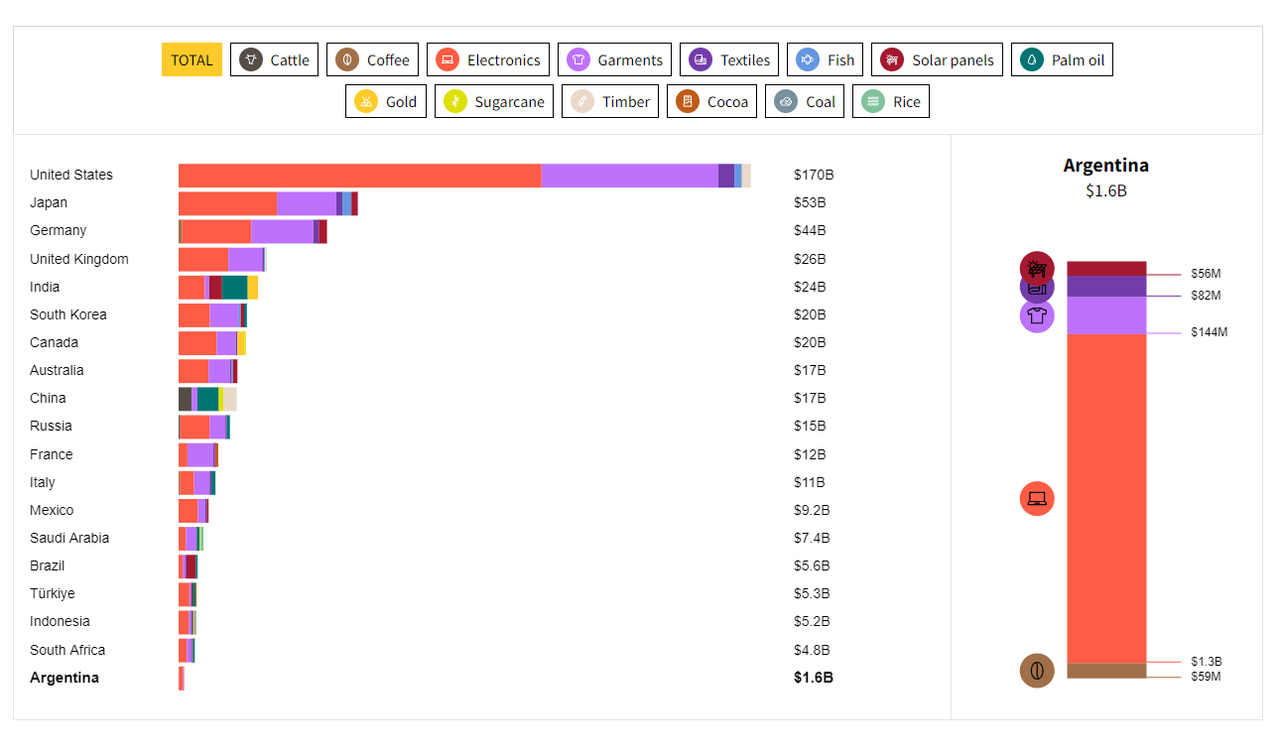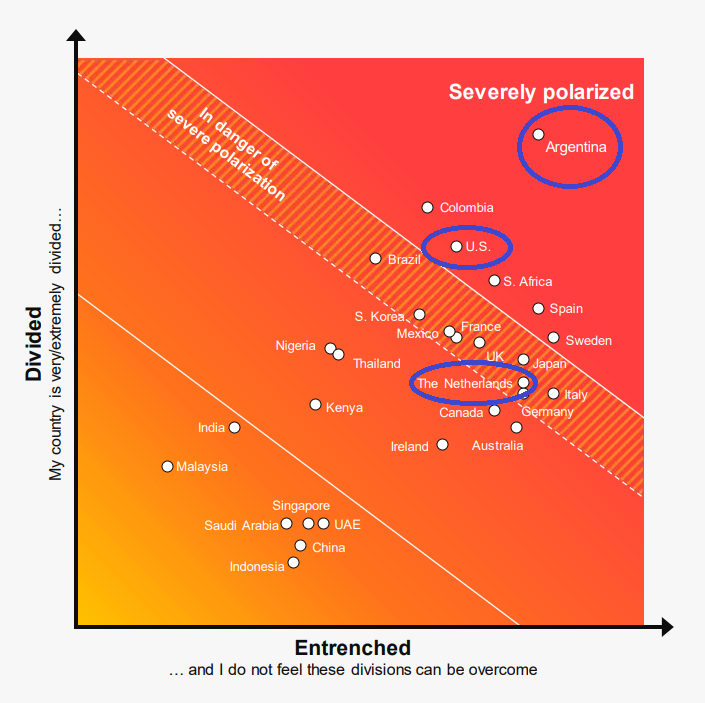UNDERSTANDING HOW WE ARE LINKED TO MODERN SLAVERY THROUGH THE PRODUCTS WE BUY
While estimating prevalence of modern slavery where it occurs is critical in identifying where the need for intervention is greatest and most pressing, it does not paint a complete picture of where responsibility lies.
Although the highest prevalence of forced labour is found in low-income countries, it is deeply connected to demand from higher-income countries. The production and movement of goods between countries – from the sourcing of raw materials to manufacturing, packaging, and transportation – creates complex and opaque supply chains, many of them tainted with forced labour.
In 2021, G20 countries imported US$468 billion worth of goods at-risk of modern slavery. We present breakdowns of the top five highest-value at-risk products imported by each G20 country.
 https://www.walkfree.org/global-slavery-index/
https://www.walkfree.org/global-slavery-index/
Nearly every government in the world has committed to eradicating modern slavery through their national legislation and policies, yet progress has largely stagnated since 2018.
An estimated 50 million people were living in modern slavery on any given day in 2021, an increase of 10 million people since 2016.
Generally, my guess would be that graphs of energy per capita and prevalence of slavery will be mirror images.

Energy per capita on the top, prevalence of slavery on the bottom, the x axis being time and the red horizontal line being where we are now.
All this provided a more concentrated form of energy is not on the horizon anytime soon.
Higgenbotham wrote: Sun Nov 26, 2023 6:26 pm
As you recall – and as we’ll discuss in greater detail as the course goes on – every American has over 250 invisible energy slaves working 24/7 for them. (52 That is, the labor equivalent of 250 human workers, 24/7, every day of the year, mostly derived from burning fossil carbon and hydrocarbons (60 barrel of oil equivalents of oil, coal and natural gas, X 4.5 years of human labor energy output in each). Every American thus has a veritable army of invisible servants, which is why even those below the official poverty line live, for the most part, lives far more comfortable and lavish with respect to energy and stuff than kings and queens of old (but obviously not as high in social status). Being long dead and pulled from the ground – and thus a bit zombie-esque – these energy slaves don’t complain, don’t sleep, and don’t need to be fed. However, as we are increasingly learning, they do inhale, exhale, and leave behind waste. Since they’re invisible, we don’t think about these fossil helpers any more than we think about nitrogen (which happens to be 78% of what we breathe in, but hey, it’s just “there”, so why think about it?) Same with our 250 energy helpers. The extent we think about them is when we fill up at the pump or pay our electric bill – and then only as an outlay of our limited dollars.
We use the “slave” metaphor because it’s really a very good one, despite its pejorative label. Energy slaves do exactly the sort of things that human slaves and domestic animals previously did: things that fulfilled their masters’ needs and whims. And they do them faster. And cheaper. Indeed, it probably wasn’t a big coincidence that the world (and the USA) got around to freeing most of its human slaves only once industrialization started offering cheaper carbon labor replacements.
https://www.resilience.org/stories/2017 ... -largesse/
Thing is, the energy slaves will soon be going away forever. In the last 30 years we’ve burned a third of all fossil energy that has been used since it was discovered thousands of years ago.58 Since your authors have been alive, humans have used more energy than in the entire 300,000 year history of homo sapiens.59 We are just now passing through the all-time peak of liquid hydrocarbon availability, which is the chief driver of our economies we’re heading back into times – either gradually or suddenly, but inexorably – in which human labor makes up an increasing percentage of the total energy we have available. One day human (and perhaps animal) labor will again be the majority of the work done in human societies – just like it is in an anthill.
Sadly, there are about 50 million people today who are actually slaves, 9 million more than in 2016 according to a new report published by the UN’s labor agency, with 27.6 million doing forced labor, and 22 million in forced marriage or sex trade (Saric 2022 Modern slavery has risen significantly in last five years, new report says. Axios).
https://energyskeptic.com/2020/energy-slaves/
Bob Butler wrote: Mon Nov 27, 2023 7:46 pm
The false claim is of soft slavery.
Another example of soft slavery is exporting jobs via "free trade agreements" to countries outside the US which allow slave labor, hiding this fact through opaque supply chains. This was championed starting with the Clinton Administration and continued through the Obama Administration. Starting in 2016, Donald Trump tried to reverse this, but I don't think he was able to make much headway in his first administration. Maybe in his second.
However, any serious attempt to reverse this form of soft slavery will ultimately require a bump down in standard of living as currently defined. Most of the cream will come off the top 10 percent but some will come off the bottom 90 percent too.
While the periphery breaks down rather slowly at first, the capital cities of the hegemon should collapse suddenly and violently.



